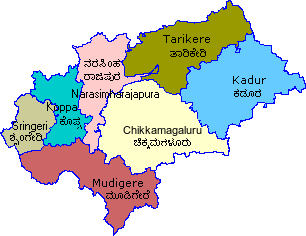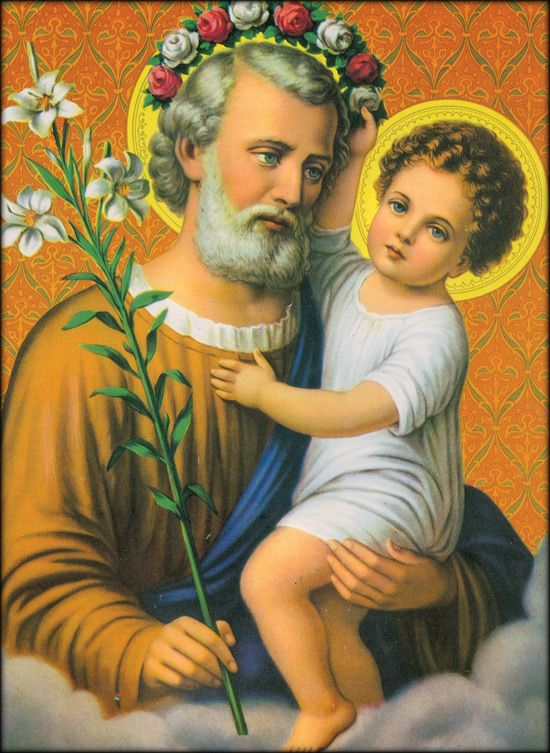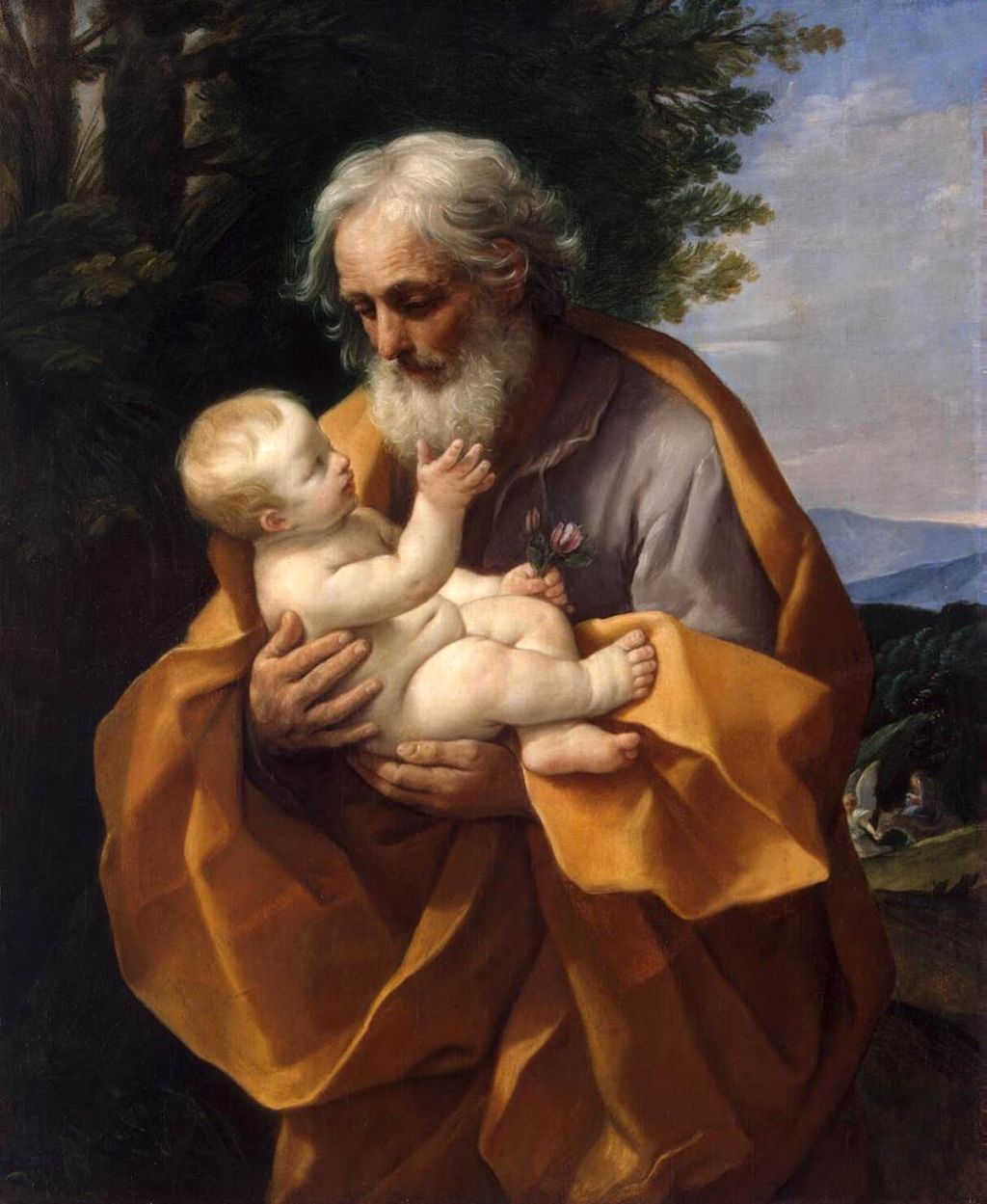|
The
Diocese of Chikmagalur was erected on Nov. 16,
1963, by Pope Paul VI with territory taken from
the Diocese of Mysore. Initially it covered the
three districts of Chikmagalur, Hassan and
Shimoga. Bishop Alphonsus Mathias served as the
first Bishop of Chikmagalur. The district of
Shimoga was detached in January, 1989, to form
part of the newly erected Diocese of Shimoga.
Nestled at 3,400ft in the Sahyadri mountains,
Chikmagalur is situated in the Western Ghats
region, a major watershed in the southwestern
part of Karnataka state. Typical of Ghat
topography, the town offers vistas of mountains,
streams, and coffee and pepper plantations. A
number of rivers - the Bhadra, Hemavathi, Tunga,
Netravathi, Vedavathi - originate in the hills
surrounding the town. It was here that coffee
was first cultivated in India, in 1670 by Baba Budan. The revered Muslim leader had brought
coffee seeds from Yemen, and the Baba Budan
mountain range to the north of the town is named
after him. Later taken up by European planters,
coffee production and trade has been
Chikmagalur's main industry.
General Information
-
Type of Jurisdiction:
Diocese
-
Erected:
16 November 1963
-
Metropolitan:
Archdiocese of Bangalore
-
Rite:
Latin (or Roman)
-
Country:
India
-
Square Kilometers:
14,015 (5,413 Square Miles)
-
Mailing Address:
Bishop's Office, Jyothinagar,
Chikmagalur - 577102, Karnataka, India
Telephone: (08262)20.389
-
Parishes:
44
-
Shrine:
2
-
Total Priests of the Diocese: 73
In Service: 63
Retired priests : 10
Past and
Present Ordinaries
-
Bp.
Alphonsus Mathias
(16 Nov 1963 Appointed - 12 Sep 1986
Appointed, Archbishop of Bangalore)
-
Bp. John
Baptist Sequeira
(26 Jan 1987 Appointed - 2 Dec 2006
Retired)
-
Bp. Anthony
Swamy Thomasappa
(2 Dec 2006 Appointed - )
HISTORY :
Estd. : 16-11-1963
Area : 14,015 Sq. Kms.
Total Population : 29,17,234
Catholics : 39,558
 The
Diocese of Chikmagalur, comprising of the three
civil districts of Shimoga, Chikmagalur and
Hassan was created by Pope Paul VI by the
Apostolic Constitution, 'Indicae Regionis' dated
16th November 1963. Earlier this area was a part
of the vast diocese of Mysore. It was
Canonically erected by His Excellency Arch
Bishop James Ronald Knox, the Apostolic
internuncio on 4/02/1963 at St. Joseph's
Cathedral Chikmagalur. The most Rev. Dr.
Alphonsus Mathisas D.D. J.U.D was consecrated on
05/02/1964 as the first Bishop. In January 1989
the District of Shimoga along with the District
of Chitradurga of Bangalore Arch Diocese, was
formed into the Diocese of Shimoga. The
Diocese of Chikmagalur, comprising of the three
civil districts of Shimoga, Chikmagalur and
Hassan was created by Pope Paul VI by the
Apostolic Constitution, 'Indicae Regionis' dated
16th November 1963. Earlier this area was a part
of the vast diocese of Mysore. It was
Canonically erected by His Excellency Arch
Bishop James Ronald Knox, the Apostolic
internuncio on 4/02/1963 at St. Joseph's
Cathedral Chikmagalur. The most Rev. Dr.
Alphonsus Mathisas D.D. J.U.D was consecrated on
05/02/1964 as the first Bishop. In January 1989
the District of Shimoga along with the District
of Chitradurga of Bangalore Arch Diocese, was
formed into the Diocese of Shimoga.
Geographically the Diocese of Chikmagalur is
situated in the Western Ghats and consists of
hilly region where the main crop is coffee. Tea
is grown in some places. Ragi, paddy, maize,
sugar-cane, vegetables, pulses and coconut are
grown in the plains. The greater part of the
catholic population are the Konkanies,
descendents of migrants from the South Canara
District, who had come for work in coffee
plantations and later on settled in the area of
whom some are planters. The native Catholics are
found in the plain of Hassan District, their
ancestors had become Catholics in the beginning
of the 18th century when the Jesuit missionaries
evangelized the area. Later M.E.P Fathers
continued this work of evangelization. After the
errection of the Diocese only Indian Priests are
working in the Diocese. Descendents of the
settlers from Tamil Nadu can be found allover
the Diocese. The early history of evangelization
of Chikmagalur Diocese goes back to 16th
century.
The Diocese of Chikmagalur begun with 19
parishes and 18 Diocesan Priests in the three
districts has taken strides of Progress. Now
there are 39 Parishes, 1 Shrine, 3 Independent
stations with resident priests and 56 active
Diocesan Priests. Besides there are a great
number of religious priests and sisters.
Educational institutions have increased and even
first grade colleges have been started. The St.
Joseph's Minor Seminary, Bridgetine convent and
the Holy Cross Hospital at Chikmagalur, the
Cloistered Carmel Convent, the Don Bosco
Technical School and Seva Samsthe, the Diocesan
Social Service Centre (C.M.S.S.S.) at Hassan are
but a few of the many important institutions.
The noble stalwart of faith the late Bishop Rene
Feuga of Mysore together with Late Monsignor
Angelo Fernandes are the principle cause of
Establishing Chikmagalur Diocese and are
remembered with gratitude. Under the young
energetic and talented Bishop Alphonsus Mathias
the Diocese progressed steadily and was a
pioneer in evangelization, Kannada music and
writing. We are proud to say that the first
Kannada Cassettes and religious books were
published by the Diocese. Bishop J.B Sequeira,
the Rector of St. Peter's Pontifical Seminary
succeeded Bishop Alphonsus, who went as the Arch
Bishop of Bangalore after serving the Diocese
for 22 years. Bishop J.B. Sequeira was
consecrated on 11/06/1987 as the Bishop of
Chikmagalur and under him the present Minor
Seminary was built. He retired after 18 years of
active service. The Diocese is proude of giving
2 Bishops, Bishop Thomas Vazapilly, the present
Bishop of
Mysore and Bishop P .V. George of Madagascar,
the M.E.P Superior General Fr. Balthazar
Castelino and Fr. Dorairaj, great Missionary and
Rector in Madagascar.
Bihop Thomasappa Anthony Swamy D.D. succeeded
Bishop J. B. Sequeira and was consecrated on
06/02/2007 as the third Bishop of Chikmagalur.
He was the head of the Missiology Department at
St. Peter's Pontifical Seminary in Bangalore
before his Bishopric. Under his active
leadership many new Churches and Presbyteries
have been built. A new life and zeal has filled
the Diocese which has made priests more active,
zealous and enterprising.
18 Priests of the Diocese have gone to the Lord
after their active ministry in the Diocese
 OUR PATRON : OUR PATRON :
SAINT JOSEPH IS THE PATRON OF THE CATHOLIC
CHURCH AS WELL AS OF CHILDREN, FAMILIES,
VIRGINS, EXILES AND THE SUFFERING. HE IS ALSO
INVOKED FOR A HAPPY AND HOLY DEATH AND FOR
FINDING A GOOD HUSBAND
He is regarded as the Patron of the Catholic
Church for the Church is the Holy Family
extended in the course of the centuries. The
Church is really Greater Nazareth, with Saint
Joseph as its head. With the many problems being
encountered by the Church today, it is an
opportune time to call on its guardian and
patron to protect it from its enemies.
Saint Joseph watches over children with a loving
care as he guarded and cared for the Infant
Saviour. He protects families because he was the
head of the greatest family that ever existed.
He also loves workers because even if he came
from the royal house of David, he worked as a
carpenter to support the Holy Family.
He protects virgins because he himself had a
virginal heart, his wife was a Virgin and he
stood nearest, after Mary, to the "Lamb without
spot". He is also the patron of those who
rejoice and suffer because his own heart
experienced seven joys and seven sorrows. He is
even the patron of exiles since he spent seven
years with Jesus and Mary in a foreign land. He
is invoked for a happy and holy death since he
died in the arms of Jesus and Mary. He is
likewise invoked by women who wish to find a
good husband because he had all the God-given
qualities as befitted the husband of Mary and
the father of Jesus.
Devotion to Saint Joseph
 Joseph was "a just man". This praise bestowed by
the Holy Ghost, and the privilege of having been
chosen by God to be the foster-father of Jesus
and the spouse of the Virgin Mother, are the
foundations of the honour paid to St. Joseph by
the Church. So well-grounded are these
foundations that it is not a little surprising
that the cult of St. Joseph was so slow in
winning recognition. Foremost among the causes
of this is the fact that "during the first
centuries of the Church's existence, it was only
the martyrs who enjoyed veneration" (Kellner).
Far from being ignored or passed over in silence
during the early Christian ages, St. Joseph's
prerogatives were occasionally descanted upon by
the Fathers; even such eulogies as cannot be
attributed to the writers among whose works they
found admittance bear witness that the ideas and
devotion therein expressed were familiar, not
only to the theologians and preachers, and must
have been readily welcomed by the people. The
earliest traces of public recognition of the
sanctity of St. Joseph are to be found in the
East. His feast, if we may trust the assertions
of Papebroch, was kept by the Copts as early as
the beginning of the fourth century. Nicephorus
Callistus tells likewise � on what authority we
do not know � that in the great basilica erected
at Bethlehem by St. Helena, there was a gorgeous
oratory dedicated to the honour of our saint.
Certain it is, at all events, that the feast of
"Joseph the Carpenter" is entered, on 20 July,
in one of the old Coptic Calendars in our
possession, as also in a Synazarium of the
eighth and nineth century published by Cardinal
Mai (Script. Vet. Nova Coll., IV, 15 sqq.).
Greek menologies of a later date at least
mention St. Joseph on 25 or 26 December, and a
twofold commemoration of him along with other
saints was made on the two Sundays next before
and after Christmas. Joseph was "a just man". This praise bestowed by
the Holy Ghost, and the privilege of having been
chosen by God to be the foster-father of Jesus
and the spouse of the Virgin Mother, are the
foundations of the honour paid to St. Joseph by
the Church. So well-grounded are these
foundations that it is not a little surprising
that the cult of St. Joseph was so slow in
winning recognition. Foremost among the causes
of this is the fact that "during the first
centuries of the Church's existence, it was only
the martyrs who enjoyed veneration" (Kellner).
Far from being ignored or passed over in silence
during the early Christian ages, St. Joseph's
prerogatives were occasionally descanted upon by
the Fathers; even such eulogies as cannot be
attributed to the writers among whose works they
found admittance bear witness that the ideas and
devotion therein expressed were familiar, not
only to the theologians and preachers, and must
have been readily welcomed by the people. The
earliest traces of public recognition of the
sanctity of St. Joseph are to be found in the
East. His feast, if we may trust the assertions
of Papebroch, was kept by the Copts as early as
the beginning of the fourth century. Nicephorus
Callistus tells likewise � on what authority we
do not know � that in the great basilica erected
at Bethlehem by St. Helena, there was a gorgeous
oratory dedicated to the honour of our saint.
Certain it is, at all events, that the feast of
"Joseph the Carpenter" is entered, on 20 July,
in one of the old Coptic Calendars in our
possession, as also in a Synazarium of the
eighth and nineth century published by Cardinal
Mai (Script. Vet. Nova Coll., IV, 15 sqq.).
Greek menologies of a later date at least
mention St. Joseph on 25 or 26 December, and a
twofold commemoration of him along with other
saints was made on the two Sundays next before
and after Christmas.
In the West the name of the foster-father of Our
Lord (Nutritor Domini) appears in local
martyrologies of the ninth and tenth centuries,
and we find in 1129, for the first time, a
church dedicated to his honour at Bologna. The
devotion, then merely private, as it seems,
gained a great impetus owing to the influence
and zeal of such saintly persons as St. Bernard,
St. Thomas Aquinas, St. Gertrude (d. 1310), and
St. Bridget of Sweden (d. 1373). According to
Benedict XIV (De Serv. Dei beatif., I, iv, n.
11; xx, n. 17), "the general opinion of the
learned is that the Fathers of Carmel were the
first to import from the East into the West the
laudable practice of giving the fullest cultus
to St. Joseph". His feast, introduced towards
the end shortly afterwards, into the Dominican
Calendar, gradually gained a foothold in various
dioceses of Western Europe. Among the most
zealous promoters of the devotion at that epoch,
St. Vincent Ferrer (d. 1419), Peter d'Ailly (d.
1420), St. Bernadine of Siena (d. 1444), and
Jehan Charlier Gerson (d. 1429) deserve an
especial mention. Gerson, who had, in 1400,
composed an Office of the Espousals of Joseph
particularly at the Council of Constance (1414),
in promoting the public recognition of the cult
of St. Joseph. Only under the pontificate of
Sixtus IV (1471-84), were the efforts of these
holy men rewarded by Roman Calendar (19 March).
From that time the devotion acquired greater and
greater popularity, the dignity of the feast
keeping pace with this steady growth. At first
only a festum simplex, it was soon elevated to a
double rite by Innocent VIII (1484-92), declared
by Gregory XV, in 1621, a festival of
obligation, at the instance of the Emperors
Ferdinand III and Leopold I and of King Charles
II of Spain, and raised to the rank of a double
of the second class by Clement XI (1700-21).
Further, Benedict XIII, in 1726, inserted the
name into the Litany of the Saints.
One festival in the year, however, was not
deemed enough to satisfy the piety of the
people. The feast of the Espousals of the
Blessed Virgin and St. Joseph, so strenuously
advocated by Gerson, and permitted first by Paul
III to the Franciscans, then to other religious
orders and individual dioceses, was, in 1725,
granted to all countries that solicited it, a
proper Office, compiled by the Dominican Pierto
Aurato, being assigned, and the day appointed
being 23 January. Nor was this all, for the
reformed Order of Carmelites, into which St.
Teresa had infused her great devotion to the
foster-father of Jesus, chose him, in 1621, for
their patron, and in 1689, were allowed to
celebrate the feast of his Patronage on the
third Sunday after Easter. This feast, soon
adopted throughout the Spanish Kingdom, was
later on extended to all states and dioceses
which asked for the privilege. No devotion,
perhaps, has grown so universal, none seems to
have appealed so forcibly to the heart of the
Christian people, and particularly of the
labouring classes, during the nineteenth
century, as that of St. Joseph.
This wonderful and unprecedented increase of
popularity called for a new lustre to be added
to the cult of the saint. Accordingly, one of
the first acts of the pontificate of Pius IX,
himself singularly devoted to St. Joseph, was to
extend to the whole Church the feast of the
Patronage (1847), and in December, 1870,
according to the wishes of the bishops and of
all the faithful, he solemnly declared the Holy
Patriarch Joseph, patron of the Catholic Church,
and enjoined that his feast (19 March) should
henceforth be celebrated as a double of the
first class (but without octave, on account of
Lent). Following the footsteps of their
predecessor, Leo XIII and Pius X have shown an
equal desire to add their own jewel to the crown
of St. Joseph: the former, by permitting on
certain days the reading of the votive Office of
the saint; and the latter by approving, on 18
March, 1909, a litany in honour of him whose
name he had received in baptism.
|
Year |
Catholics |
Total Population |
Percent
Catholicc |
Diocesan
Priests |
Religious
Priests |
Total
Priests |
Catholics
Per Priest |
Male
Religious |
Female
Religious |
Parishes |
|
1969 |
33,000 |
3,034,000 |
1.1% |
30 |
7 |
37 |
891 |
11 |
199 |
20 |
|
1980 |
49,500 |
3,410,000 |
1.5% |
47 |
6 |
53 |
933 |
6 |
232 |
29 |
|
1990 |
35,153 |
2,268,783 |
1.5% |
37 |
10 |
47 |
747 |
16 |
199 |
29 |
|
1999 |
38,873 |
2,627,691 |
1.5% |
48 |
16 |
64 |
607 |
18 |
254 |
33 |
|
2000 |
38,185 |
2,632,625 |
1.5% |
47 |
16 |
63 |
606 |
19 |
231 |
33 |
|
2001 |
39,631 |
2,685,277 |
1.5% |
46 |
19 |
65 |
609 |
22 |
248 |
33 |
|
2002 |
39,431 |
2,860,423 |
1.4% |
46 |
19 |
65 |
606 |
22 |
239 |
33 |
|
2003 |
39,159 |
2,860,423 |
1.4% |
48 |
18 |
66 |
593 |
21 |
252 |
33 |
|
2004 |
36,306 |
2,901,428 |
1.3% |
49 |
20 |
69 |
526 |
23 |
223 |
34 |
|
2006 |
36,819 |
3,014,000 |
1.2% |
53 |
18 |
71 |
518 |
20 |
237 |
34 |
Note: Any changes in boundaries over time
are not indicated in the above table.

|
 
Pope Leo XIV
 
Rev. Dr. Thomasappa Anthony Swamy
|

